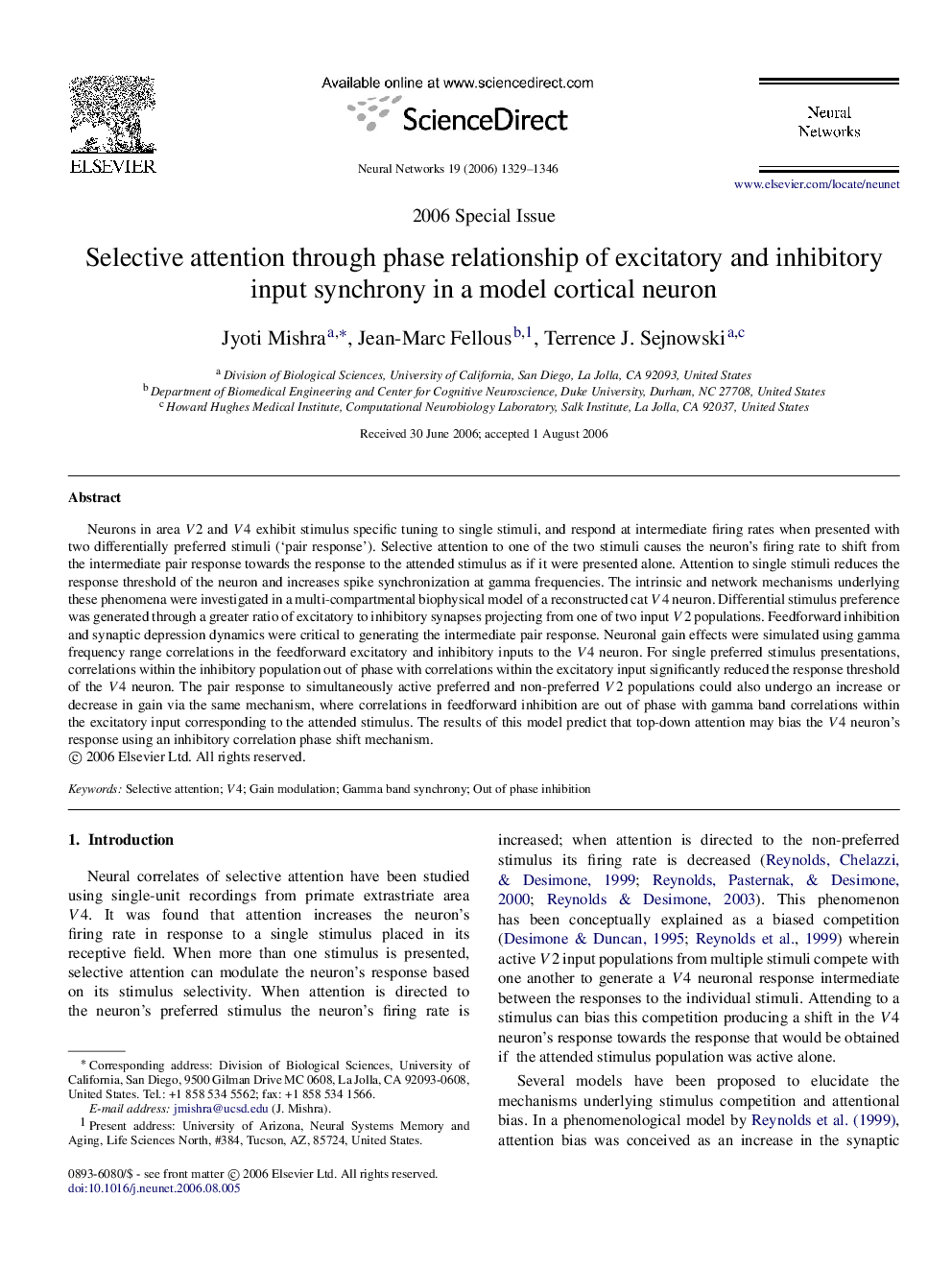| Article ID | Journal | Published Year | Pages | File Type |
|---|---|---|---|---|
| 407799 | Neural Networks | 2006 | 18 Pages |
Neurons in area V2V2 and V4V4 exhibit stimulus specific tuning to single stimuli, and respond at intermediate firing rates when presented with two differentially preferred stimuli (‘pair response’). Selective attention to one of the two stimuli causes the neuron’s firing rate to shift from the intermediate pair response towards the response to the attended stimulus as if it were presented alone. Attention to single stimuli reduces the response threshold of the neuron and increases spike synchronization at gamma frequencies. The intrinsic and network mechanisms underlying these phenomena were investigated in a multi-compartmental biophysical model of a reconstructed cat V4V4 neuron. Differential stimulus preference was generated through a greater ratio of excitatory to inhibitory synapses projecting from one of two input V2V2 populations. Feedforward inhibition and synaptic depression dynamics were critical to generating the intermediate pair response. Neuronal gain effects were simulated using gamma frequency range correlations in the feedforward excitatory and inhibitory inputs to the V4V4 neuron. For single preferred stimulus presentations, correlations within the inhibitory population out of phase with correlations within the excitatory input significantly reduced the response threshold of the V4V4 neuron. The pair response to simultaneously active preferred and non-preferred V2V2 populations could also undergo an increase or decrease in gain via the same mechanism, where correlations in feedforward inhibition are out of phase with gamma band correlations within the excitatory input corresponding to the attended stimulus. The results of this model predict that top-down attention may bias the V4V4 neuron’s response using an inhibitory correlation phase shift mechanism.
